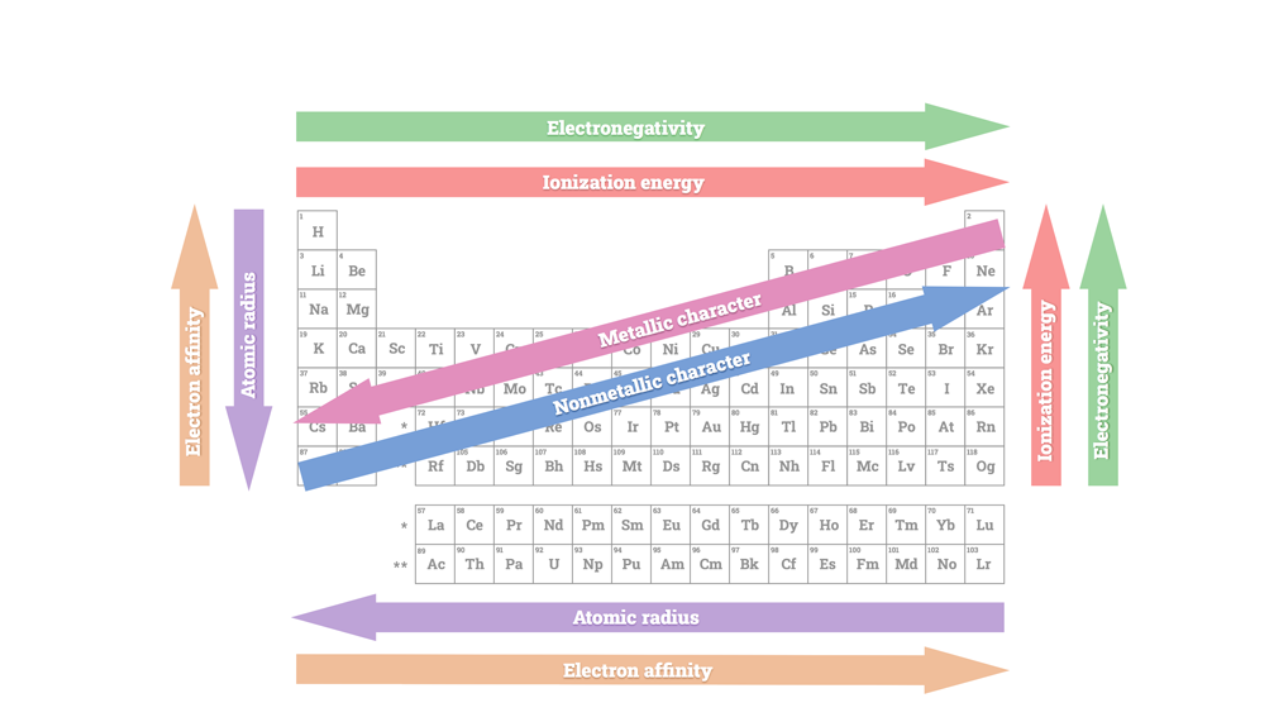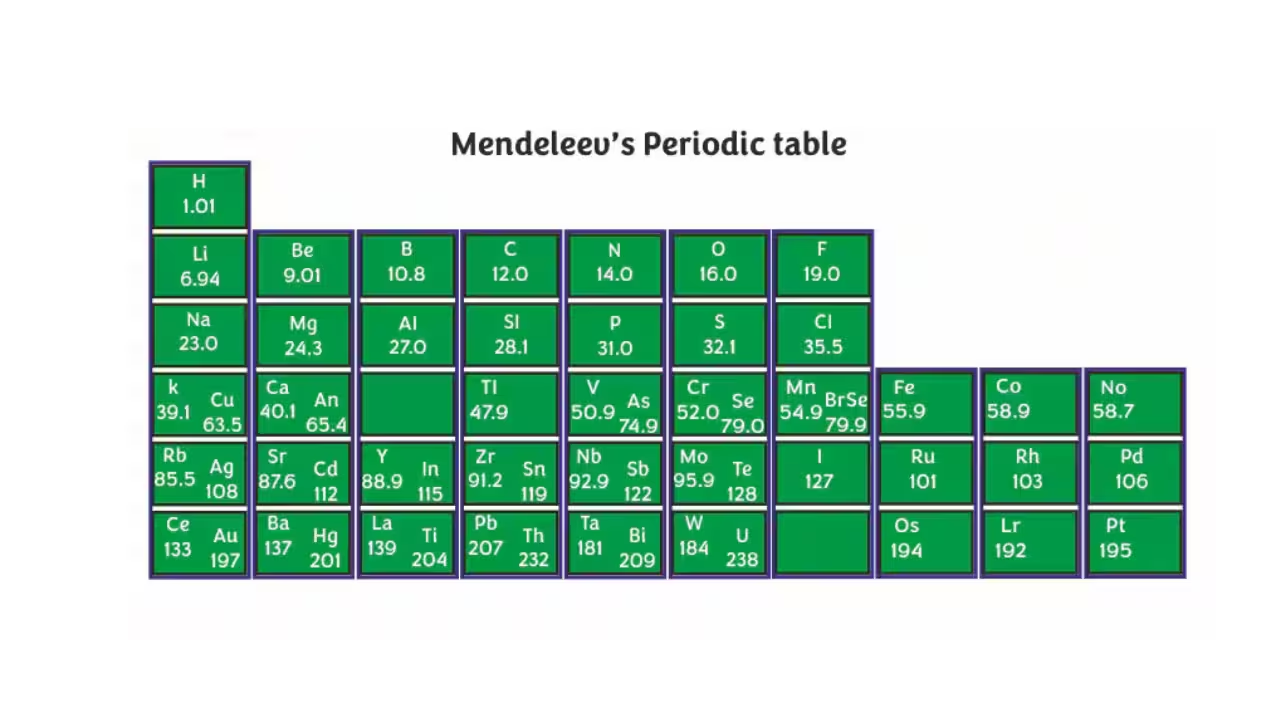
To Download PDF
Please verify your Whatsapp number first,
so you can download this pdf immediately

 Send OTP
Send OTPStuck with chemical names that sound like exam traps? Don’t worry, this chapter is way easier once you get how scientists grouped elements to simplify the chaos. That’s the core.
From Dobereiner’s triads to Mendeleev’s genius, everything will fit once the logic behind the periodic table is clear. So if you're looking for no-fluff, exam-ready Class 10 Periodic Classification of Elements Notes, this is exactly where you should be.
Feeling lost in all those elements, trends, and metallic-nonmetallic drama? You’re not alone. But trust us - this is one of those Class 10 chapters that seems scary… until it clicks. And once it does! Easy scoring.
This blog’s got everything you need in one place - full breakdowns, clear trends, keywords, NCERT tricks, and solid examples - all served in simple, no-fluff Class 10 Science Chapter 5 Notes style.
Before classification, studying elements was like reading random pages from different books - no order, no sense. As more elements were discovered, scientists needed a way to organise them based on how they behave.
Why classify them at all? Let’s break it down here:
As the number of known elements grew, things got messy. Scientists couldn’t keep up with the random properties, so they needed a smarter way to group similar elements.
When elements were arranged in a pattern, their properties started repeating at regular intervals. This made it easier to predict the behavior of new or missing elements - even before they were discovered.
Grouping elements reduced confusion. Students and scientists! could understand trends like reactivity, valency, and atomic size just by checking the position of an element.
In short, classification turned chaos into clarity - and that’s why this whole chapter exists. Once you get this idea, the rest of your Class 10 Science Chapter 5 notes will feel way more logical.
Before the modern periodic table, scientists were still figuring out how to make sense of all the known elements. Two of the earliest - and most interesting - attempts came from Dobereiner and Newlands. These weren’t perfect systems, but they helped kick off the idea that elements follow patterns.
Johann Dobereiner grouped elements in sets of three - called triads - where the middle element’s atomic mass was roughly the average of the other two. These elements also had similar chemical properties.
Example:
Key Points:
This was the first spark - the idea that atomic mass and element properties are somehow connected.
John Newlands tried to arrange elements by increasing atomic mass, and found that every eighth element had similar properties - like notes repeating in music.
Example:
Key Points:
Even though both systems had problems, they showed one thing clearly: elements follow trends. And that’s the foundation for everything in your class 10 periodic classification of elements notes.
In 1869, Dmitri Mendeleev did something genius: he arranged all the known elements based on atomic mass and their chemical properties - and the result was a table that not only made sense but could also predict elements that hadn’t even been discovered yet.
Mendeleev left blank spots for elements like gallium (eka-aluminium) and germanium (eka-silicon). Later, when these elements were discovered, they matched his predicted properties - almost exactly.
Example:
Even with flaws, Mendeleev’s periodic table was a major step forward - and still one of the most important ideas in your class 10 ch 5 science notes.
Mendeleev’s table was close, but it wasn’t perfect. Then came Henry Moseley in 1913, and he changed the game. Instead of arranging elements by atomic mass, he used atomic numbers - and suddenly, everything clicked into place.
“The physical and chemical properties of elements are a periodic function of their atomic numbers.”
That means: If you arrange elements by increasing atomic number, their properties start repeating in a predictable pattern.
The modern periodic table is divided into:
Each element has:
This table doesn’t just list elements - it helps you understand how they behave. That’s why it’s the core of your Class 10 Chemistry understanding - and shows up all over your Class 10 science chapter 5 notes.
Now that the elements are arranged neatly in the Modern Periodic Table, something super helpful happens - trends. As you move across periods or down groups, properties follow predictable patterns in the modern periodic table. Mastering this one chart means mastering half the MCQs from Class 10 Chapter 5.These are called periodic trends
This section is your quick recall zone - important terms, definitions that are always asked in boards. Perfect for fast revision before the exam.
These are simple but scoring. You’ll see them in MCQs, 2-markers, and even in match-the-following.
Metalloids: Elements showing properties of both metals and non-metals.
These diagrams may look simple, but they appear often in board papers and sample papers.

This diagram shows the overall layout of the current periodic table — the one based on atomic numbers.
Key things to include:
.png)
This is a classic arrow-based diagram that shows how various properties change across the table - super helpful for MCQs and 1-markers.
Mark trends for:

This diagram is a snapshot of the earlier classification system based on atomic mass.
What to show:
Quick Tip: These diagrams are not hard - but drawing them neatly and labeling properly can easily help you score full marks in diagram-based questions. This is where your ch 5 science class 10 notes should focus during last-minute revision.
And that’s a wrap on Periodic Classification of Elements – Class 10 Science Chapter 5. Not bad, right? From tricky table talk to actual trends that make sense - you’ve officially got it down. If this blog helped even a bit, high five. One chapter done, and your class 10 periodic classification of elements notes revision just got way easier.
Q1. What is the modern periodic table based on?
Ans. It’s based on atomic number – not atomic mass. This helps explain element properties way better.
Q2. Why is Mendeleev’s periodic table still important?
Ans. Because he predicted elements that weren’t discovered yet! That’s why he’s a legend in your Class 10 Science Chapter 5 notes.
Q3. What trends are seen in the periodic table?
Ans. Atomic size, valency, metallic and non-metallic character - all change in a regular pattern across periods and down groups.
Q4. What are groups and periods?
Ans. Groups are vertical columns with similar valency. Periods are horizontal rows where properties gradually change.
Q5. Why does atomic size decrease across a period?
Ans. Because more protons pull electrons closer, without adding new shells - so atoms get smaller.